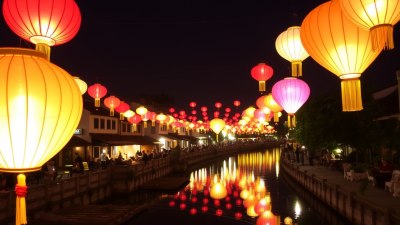How to Plan a Trip That Feels Like a Poem
Craft an unforgettable journey with poetic elements that inspire and enchant. Discover tips for a dreamy travel experience.

Image created with Flux Schnell
Planning a trip that feels like a poem is an art, one that invites introspection, creativity, and a profound connection with the world around you. Imagine embarking on a journey not just to visit places, but to experience them deeply, to savor the moments, and to embrace the beauty of life through the lens of poetry. Here’s how to curate your travel that reflects the rhythm, imagery, and emotions of a cherished poem.
1. Choosing Your Destination
The first step is selecting a destination that resonates with you. Think of places that evoke emotions, perhaps where nature sings in vivid colors, or cities that pulse with history and culture. Consider destinations like the rolling hills of Tuscany, where every sunset whispers sonnets, or the dreamy canals of Venice, where the reflections in the water tell tales of romance. Allow your emotions to guide you; let them shape your choice as a poet would choose words.
2. Setting an Intention
Every poem has a purpose, and so should your trip. Setting an intention helps to frame your journey. Ask yourself: what do you wish to learn or feel? Perhaps it is to find peace in solitude, adventure in the unknown, or joy in new experiences. Writing this intention down can solidify it, acting as a compass throughout your journey. Like a poet drafting their theme, clarify what you hope to express through your travels.
3. Researching the Rhythms of Place
When planning, immerse yourself in the rhythm of your chosen destination. Research local customs, traditions, and the natural landscape. Understand the seasons—how they affect the environment and local life. For instance, visiting Japan during cherry blossom season offers a sensory experience akin to reading a haiku: fleeting beauty, vibrant colors, a gentle breeze. The more you learn, the richer your experience will be, as you seamlessly blend into the essence of that place.
4. Crafting a Flexible Itinerary
Like the flow of a poem, your itinerary should be structured yet fluid. Create a loose framework that includes must-see sights, but allow space for spontaneity. A sudden rainstorm may lead you to a cozy café where you can write or converse with locals. These unscripted moments often become the verses that linger in memory long after the journey ends. Embrace flexibility, for sometimes the best lines of our life stories are written off the beaten path.
5. Embracing Solitude
In every poem, there are moments of solitude, where contemplation breeds inspiration. Designate times in your trip to be alone with your thoughts. Whether it’s watching the sunrise from a mountain top or sitting in silence at a city park, these moments allow for reflection and connection with your surroundings. Silence is where creativity blossoms; it can inspire your own poetic verses. Carry a journal to jot down your feelings and impressions; these notes may become the stanzas of your travel poem.
6. Engaging with Locals
Engagement is pivotal in immersing yourself in a new culture, much like the interweaving themes in poetry. Speak with locals, share a meal, and listen to their stories. Their experiences can add layers to your own understanding of the place. Each conversation could spark inspiration—perhaps they share a local legend or the secret to a beautiful sunset spot. The language of travel, like poetry, is about connection and understanding, where shared experiences form stanzas of life.
7. Collecting Memories
As you traverse through your journey, collect memories like beautiful phrases. Take photos, collect mementos, and write daily reflections. Each piece will contribute to the narrative of your travels. Consider creating a scrapbook or a digital photo book upon your return, where every image acts as imagery in your poem, capturing the essence of your experience. Through this collection, you can orchestrate the story of your trip, celebrating each moment like a cherished line.
8. Writing Your Travel Poem
At the end of your trip, it’s time to pen your travel poem. Draw from your journal entries, photographs, and mementos to shape your narrative. Use poetic devices; alliteration, imagery, and metaphors to weave your story creatively. Each stanza can reflect different chapters of your journey—your arrival, encounters with locals, moments of solitude, and the emotional highs and lows. Your poem can encapsulate the spirit of your experience, immortalizing it in words.
9. Sharing Your Story
Finally, share your travel poem. Whether through social media, a blog, or a festive gathering with friends, sharing your story spreads the magic. Every reader or listener can resonate with the emotions you convey, sparking their sense of adventure and poetic wanderlust. Perhaps your words will inspire others to embark on their own adventures, weaving their narratives into the tapestry of life.
10. Reflecting on Your Journey
Once home, take time to reflect on your journey. How has your perception of the world changed? What lessons did your travels teach you? Each journey is a teacher, and every poem carries wisdom. Reflecting on your travels allows you to appreciate the transformative power of experiencing new places, cultures, and people. Like a lasting poem, your journey becomes a fragment of who you are.
Planning a trip that feels like a poem involves creativity, reflection, and intentionality. By weaving together elements of emotion, connection, and spontaneity, you can create a travel experience that resonates deeply within you. Allow yourself to be inspired by the beauty around you—each moment is a poetic line waiting to unfold. Step into the world not merely as a traveler but as a poet, ready to embrace the verses that life offers. Each journey becomes a unique poem of exploration, emotion, and expression.











